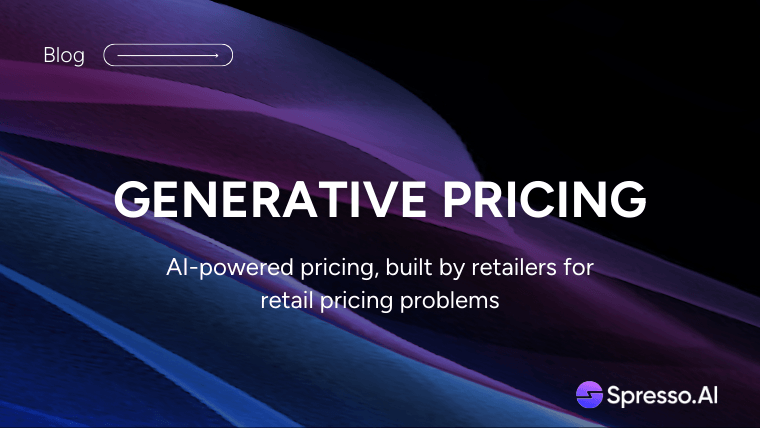
Generative Pricing: The Future of Retail Pricing
In the ever-changing retail landscape, businesses are constantly looking for new ways to gain a competitive edge. One of the most promising new technologies for retailers is generative pricing.
Generative pricing is a data-driven approach to pricing that uses artificial intelligence, machine learning, and advanced analytics to dynamically adjust prices based on real-time demand, competition, and customer behavior. This allows retailers to maximize conversion, profit or any range in-between.
How Generative Pricing Works
Generative pricing works by using a machine learning model, called a multi-armed bandit (MAB), to create five price points within a range specified by the retailer. Then the model analyzes real-time customer behavior on the retailer’s website and allocates traffic to the top-performing price point.
For example, if a retailer sells a product that is in high demand, the generative pricing solution picks up consumers’ tolerance of a higher price, thus allocating traffic to price points on the upper-end of the range. Price Optimization improves SKU profitability without compromising conversion.
Although the model relies on first-party data to feed the algorithm, it does indirectly take competitor behavior into account. This gives the retailer the best of both worlds without making them reliant on price scraping. For example, if a competitor suddenly starts charging significantly less for a particular item, the higher price on the website of the retailer using Price Optimization might not perform as well. The algorithm would pick up on that change and start to allocate traffic accordingly to a lower price point that converts better.
Benefits of Generative Pricing
There are many benefits to retailers using generative pricing. Here are a few of the most important:
- Increased revenue and profit: Generative pricing can help retailers to increase profit by an average of 46% resulting in millions of dollars back to the bottom line.
- Reduced risk: Generative pricing can help retailers to reduce the risk of over or underpricing products.
- Supports many pricing strategies: Generative pricing allows a retailer to set up pricing campaigns for specific goals, whether it is a high-velocity campaign to sell through off-season merchandise or a profit-forward campaign to maximize profits from a high-value category.
- Pricing for DTC and private label products: Generative pricing uses first-party data to establish your customers’ willingness to pay, essential to a private label or DTC product where there are often no direct competitors.
Challenges and Considerations
While generative pricing has many benefits, there are also some challenges and considerations that retailers should keep in mind. Here are a few of the ones we hear most frequently:
- MAP pricing: Often retailers have SKUs that are impacted by MAP pricing or other exception pricing rules. Spresso’s generative pricing solution can validate price campaigns against MAP pricing to ensure retailers stay in compliance.
- Price discrimination concerns: Some retailers have raised concerns about the legality of showing different prices to different customers. Spresso’s generative pricing solution, Price Optimization, recognizes user at the device level and intentionally does not take into account consumer attributes that could be considered cause for discrimination.
- Data privacy and security: Our generative pricing solution requires a retailer to provide proprietary pricing information with Spresso. Rest assured, Spresso does not share confidential pricing with other retailers. Additionally, generative pricing does not require customer info, only event data.
The Future of Generative Pricing
Generative pricing is a rapidly evolving application of AI and data science, and there are many exciting possibilities in the future of retail technology. As generative pricing continues to develop, we can expect to see even more benefits for retailers and their customers.
Today we see generative pricing being used to inform in-store pricing. In the future, we can also expect to see generative pricing being used to create new pricing models that are more flexible and responsive to changing market conditions.
Generative pricing is the future of retail pricing. Price Optimization is a powerful tool that can help retailers to increase revenue, improve profitability, and reduce risk. Retailers who embrace generative pricing will have an edge over their competitors and be well-positioned to succeed in the years to come.
Conclusion
Generative pricing is a powerful new technology that has the potential to revolutionize the retail industry. By using Price Optimization’s data-driven insights to dynamically adjust prices, retailers can achieve their business goals whatever they may be - improving profitability, conversion rate, and/or revenue generation.
If you are a retailer looking to understand how generative pricing can benefit your business we’d love to show you - contact us to book a custom demo today!